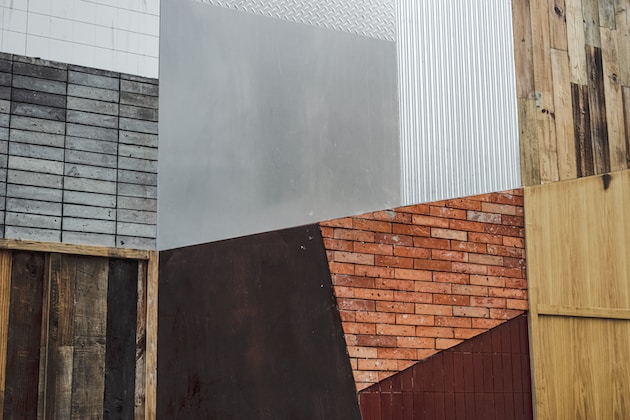Sustainable building materials are the cheat codes to unlock sustainability in the architecture and construction industry. The construction sector is one of the largest contributors to greenhouse gas emissions. The industry professionals have been taking baby steps to be more sustainable and include green building materials that ramp up the process.
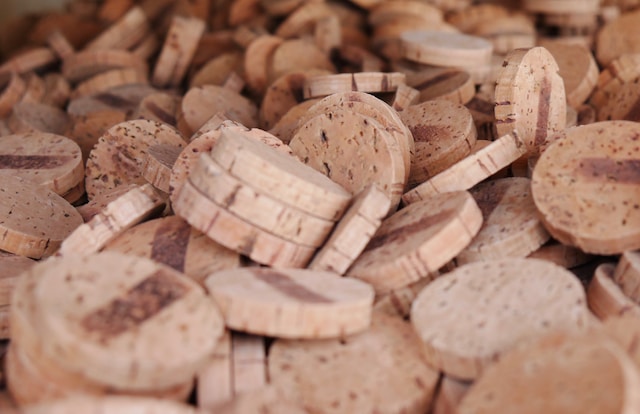
What Are Sustainable Building Materials?
Sustainability is more than just recycling or less energy usage; it encompasses a holistic approach to construction. Sustainable building materials not only reduce energy consumption and greenhouse emissions directly but also enhance overall building efficiency when harmonized with passive design strategies. Additionally, some materials are derived from organic and renewable sources, reducing environmental strain while promoting a circular economy. These sustainable construction materials not only benefit the environment but also contribute to constructing structures that are environmentally responsible, energy-efficient, and resilient, thereby fostering a sustainable built environment for present and future generations.
Without further ado, let’s take a look at the below environmentally friendly building materials.
Top 15 Examples of Sustainable Materials
1. Mycelium
Have you ever imagined that one day we might be building with mushrooms? Thanks to technology, it is no longer impossible. Many researchers are now working on mycelium as a sustainable building material. Mycelium is the root-like fibres of fungus, and therefore it is 100% organic, biodegradable and compostable. Prior to its growing use in the construction industry, mycelium was often used for packaging.
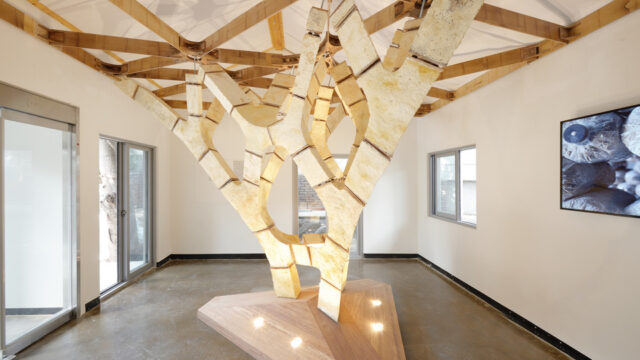
Example Of Mycelium As A Sustainable Building Material: MycoTree
MycoTree is an experimental project by an architect and an engineer for the 2017 Seoul Biennale of Architecture and Urbanism. It tests the potential of mycelium to grow into self-supporting structures. The mycelium components become the load-bearing units while attached to each other in a system of bamboo endplates and metal dowels.
2. Recycled Steel
Considered one of the most carbon-intensive products, steel is a key element in many industries. Construction, infrastructure, ship building, vehicle manufacturing – you name it.
Obviously, the production of steel is a major contributor to climate change and it adds to the total carbon footprint. The act of recycling alone helps to conserve natural resources. Recycling steel is considered one of the best sustainable construction materials. It also helps to reduce pollution, as it avoids the need to extract and process raw materials. An article from The Bartlett UCL reported back in 2021 that recycled steel could save over 80% of greenhouse gas emissions.
Read more: Environmental Product Declarations – Everything You Need to Know
3. Reclaimed Wood

Just as with steel, creating new wood demands substantial energy and resources. Yet, reclaimed wood circumvents this, enabling reuse without added resource strain. The result: diminished greenhouse gas emissions and preserved resources. Wood, a readily available, sustainable material, allows for better carbon absorption through careful planting and harvesting. Reclaimed wood’s distinctive character enhances value. Its warmth, aesthetics, and sustainable sourcing make wood a favored construction choice.
Wood is also easy to ensemble on-site. For example, Siquiman Lodge by Pablo Senmartin Arquitectos was constructed with an on-site wood framing system.
4. Cork
One of the best representatives of sustainable building materials, cork is both renewable – as it is made from a tree bark that regenerates – and recyclable which makes cork in the top of the list of green building materials. It has become slowly popular thanks to its lightweight, hard-wearing, insulation capacities. Cork is suitable for both interiors and exteriors with a good aesthetic quality making it a great green building material.
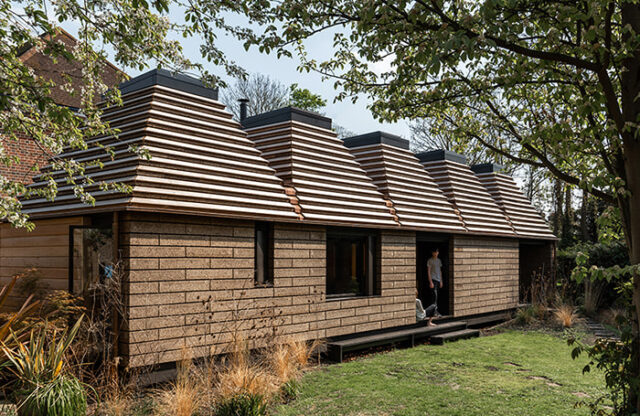
Example Of Cork As A Sustainable Building Material: Cork House
Built entirely in cork, from structural walls to roof, the Cork House has a remarkably low whole-life carbon. At completion, it is carbon-negative due to the prefabricated cork blocks and engineered wood.
5. Bamboo
Bamboo is another green building material that is versatile and can be used for a variety of applications. A rapidly renewable resource, since can be harvested within 10 years or less. Such green building materials have low carbon footprint and is strong and durable with a capacity to endure high-tensile force. Many bamboo structures and buildings are grand, suitable for sustainable tourism infrastructure. Vo Trong Nghia is well-known for his exquisite green buildings constructed mainly of bamboo.
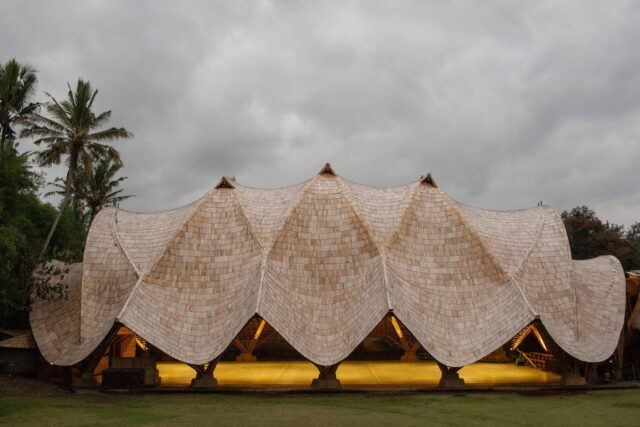
6. Rammed Earth
Humans have used rammed earth for centuries which is considered one of the oldest sustainable architecture materials especially when talking about vernacular architecture. Now with better technology complementing it, rammed earth can be more durable, aesthetically pleasing and insulating. Rammed earth walls are dense and thick, making the thermal mass higher. The building will be cooler in summer and warmer during winter, perfect to reduce energy consumption. Likewise, it also reduces noise transmission through its walls, providing high acoustic insulation.
7. Terrazzo
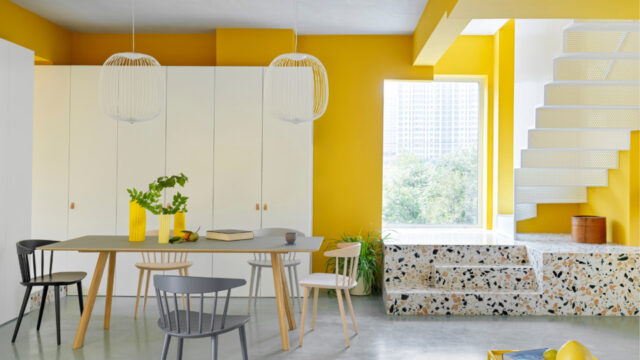
Why is terrazzo on the green building materials list? The components used in terrazzo can be recycled materials, such as marble scraps or glass bottles. This reduces the need for virgin materials and minimizes the environmental impact of the material’s production. It is usually poured and cured in place, which minimizes transportation emissions. This means that the material does not need to be transported from a factory, which can be a significant source of emissions.
As a durable material that can last for many years, it is also easy to maintain, which means that it requires less frequent replacement than other materials. This reduces the environmental impact of the material’s life cycle.
In addition to these environmental benefits, terrazzo is also a versatile material that can be used for a variety of applications, including flooring, countertops, and walls. It is also non-toxic and does not off-gas harmful chemicals.
8. Hempcrete
Hempcrete, a bio-composite material made from hemp plants, is gaining recognition as a highly green building product in architecture and construction. Hempcrete are environmentally friendly building materials that feature low carbon impact, renewability, natural insulation, moisture control, and non-toxicity, it promises enhanced energy efficiency and minimized environmental impact, marking it as a pivotal sustainable choice for architecture and construction’s future.

Example Of Hempcrete As Sustainable Building Materials: Mobius House
The organic form of the Mobius House, by Antony Gibbon Designs, is strengthened by hempcrete blocks reinforced in concrete. The choice of green construction materials remained innovative while responding to the challenges of nature and structural form.
9. Biocomposite Cement
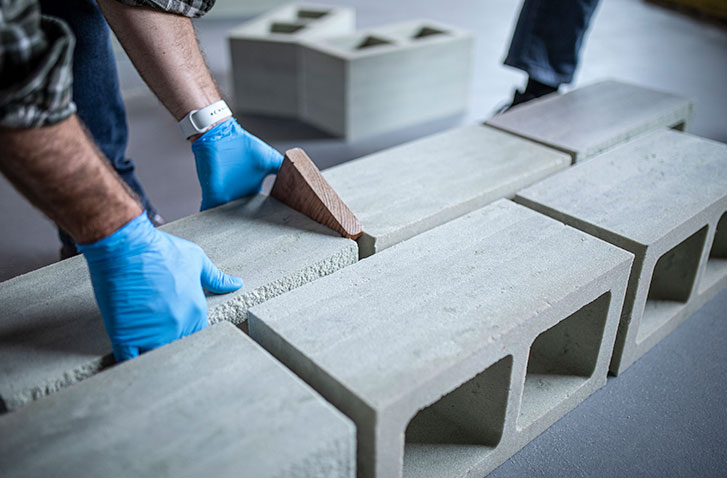
Biocomposites are made up of bio-based and biodegradable polymers and reinforcing agents. Such green construction materials are much needed to replace non-biodegradable petroleum-based materials. Although biocomposite cement isn’t as prevalent as other sustainable materials, its potential is under exploration. For example, Prometheus Materials has developed a low-carbon cement-like material using micro-algae, offering considerably superior carbon emission reduction compared to traditional cement or concrete.
10. Mud Brick
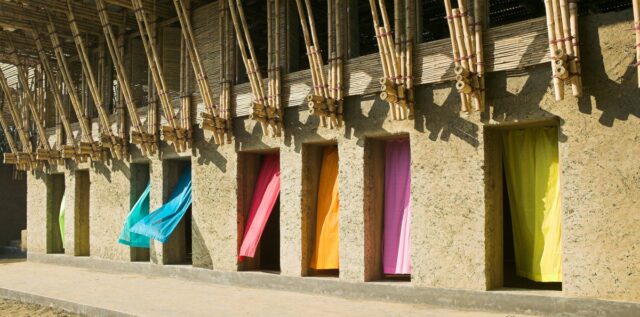
If rammed earth is used in single large pieces of earth, mud bricks are smaller but still equally energy efficient and environmentally friendly building materials. Sometimes referred to as adobe, mud bricks are sun-dried and can be used in both load-bearing and non-load bearing construction. They can be easily produced and even reinforced with fibre to improve tensile strength. Materials like rammed earth and mud bricks are proof that age-old materials are truly green building materials and often overlooked.
11. Mass Timber

Mass timber is an increasingly popular sustainable building material, characterized by its large cross-laminated timber panels. As a renewable resource, its sourcing from trees offers a crucial advantage: growth and harvest without damage to the environment. Its ecological merits include its notably low embodied carbon footprint, outperforming concrete and steel in terms of greenhouse gas emissions during production.
Architects like Michael Green have been advocating for mass timber construction to replace concrete and steel.
12. Ferrock
Another recycled material on the list is ferrock. Made of wasted steel dust and ground-up glass silica, ferrock is a substitute for cement. The solidification into ferrock happens when the steel dust reacts with CO2 absorbed, becoming iron carbonate. It is much stronger and more flexible than concrete and is an economical choice for small projects. As it is made from 2 waste materials, production of ferrock for large-scale projects can become limited.
13. Recycled Plastics
A 2022 OECD report highlights a staggering statistic: just 9% of the world’s plastic waste is effectively recycled. That is a notably modest figure when compared against the global plastic waste generation, exceeding 300 million tonnes annually. The unsustainable nature of plastic has become an enormous issue for the plant, but we can take advantage of it. Plastic is fairly easy to recycle, is lightweight and waterproof.
Despite its current underutilization as a building material, there’s growing anticipation that recycled plastics may gain more prominence in the market. This shift is in line with the industry’s broader aspirations to transition towards a circular economy, where resources are efficiently used, reused, and repurposed, reducing waste and mitigating environmental harm.

Example of Recycled Plastics as a sustainable building material: The Plastic Museum
The Plastic Museum was a temporary installation opened in Madrid to highlight the importance of responsible plastic usage and its contribution to ecological sustainability. It was prefabricated entirely from plastic, assembled on-site and was recycled after the exhibition.
14. Low Emission Glass Or Low-E Glass
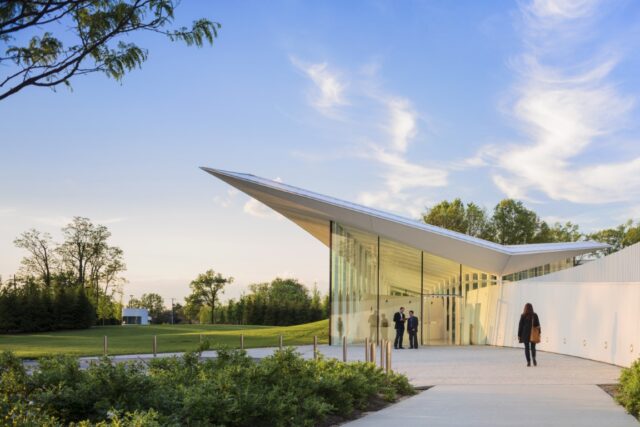
Low-E glass minimizes the ultraviolet and infrared rays that pass through glass without compromising visibility. This innovative material bears profound implications, effectively regulating indoor temperatures, averting excessive heat in summers and conserving warmth during winters. As a result, substantial energy savings are realized. The potential to curtail energy consumption by up to 30% signifies not only significant financial relief through reduced energy bills but also a reduction in greenhouse gas emissions.
Materials like low-E glass helped the Novartis Visitor Reception project to be LEED Gold Certified back in 2013.
15. Precast Concrete Blocks
While concrete is often perceived as non-sustainable, it has the potential to be a more environmentally-friendly choice when produced and utilized with care. Precast concrete, manufactured in controlled factory settings, presents itself as a suitable option for sustainability. It reduces waste compared to on-site concrete, as it minimizes spillage risks and excesses. The durability and longevity of precast concrete further contribute to sustainability by diminishing the need for frequent repairs and replacements.
Additionally, it enhances energy efficiency in structures by providing effective insulation and thermal mass, exemplifying the versatility of concrete as green building materials. By harnessing these sustainable practices, concrete buildings can indeed become more ecologically sustainable.
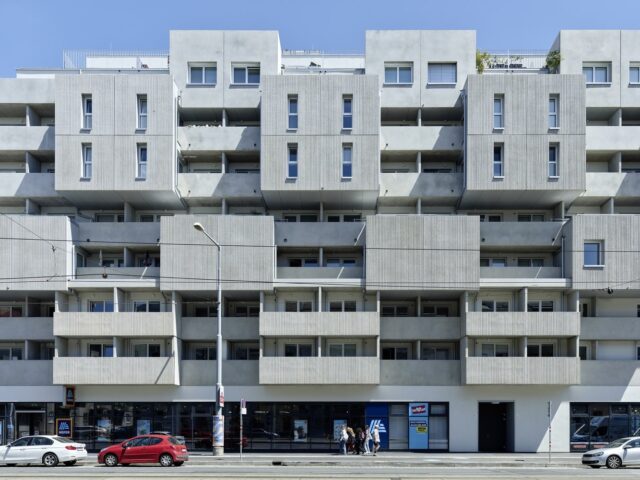
Why Should We Use Sustainable Building Materials?
One of the most common design goals for many architects and engineers is to achieve green building standards. A sustainable building is better in every sense – from comfort and energy consumption to better market price.
By using sustainable materials:
- You are ensuring less negative environmental impact.
- The design is water and energy efficient by implementing passive design strategies.
- The use of such materials also ensures a better indoor environmental quality.
- Reducing energy consumption, greenhouse gas emissions and waste management can be easily accomplished by using sustainable building materials.
One easy way to achieve a sustainable design is to follow the LEED rating system and requirements. Let us reiterate that unsuccessful use of these materials will make them redundant. With a LEED certification, you will understand sustainability better.

